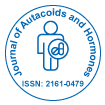Research Article
Male Breast Cancer in Fiji - A Descriptive Study
| Singh S1*, Nagra S2 and Cama J. Mr3 | ||
| 1 Medical Officer and National Acting Epidemiologist, Ministry of Health-Fiji | ||
| 2 Surgical Registrar, Colonial War Memorial Hospital (CWMH), Suva | ||
| 3 Senior Lecturer/Consultant Paediatric Surgeon, Fiji School of Medicine/CWMH | ||
| Corresponding Author : | Dr. Sheetal Singh Medical Officer and National Acting Epidemiologist Ministry of Health-Fiji Tel: 679-3306177 E-mail: sheetal@nagras.com |
|
| Received October 16, 2011; Accepted February 01, 2012; Published February 04, 2012 | ||
| Citation: Singh S, Nagra S, Cama JMr (2012) Male Breast Cancer in Fiji – A Descriptive Study. Autacoids S6:001. doi: 10.4172/2161-0479.S6-001 | ||
| Copyright: © 2011 Singh S, et al. This is an open-access article distributed under the terms of the Creative Commons Attribution License, which permits unrestricted use, distribution, and reproduction in any medium, provided the original author and source are credited. | ||
Related article at Pubmed Pubmed  Scholar Google Scholar Google |
||
Abstract
Objective: To describe the trends in epidemiology of adult male breast cancer in Fiji and compare with international trends Study design: Population based descriptive study of retrospective data over an 11 year period. Methodology: Secondary data from Fiji’s cancer card registry was analysed from 2000-2010 to describe trends of male breast cancer. Results and discussion: Male breast Cancer (MBC) accounts for approximately 2% of all breast cancers in Fiji over the past 11 years, which is twice the proportion from global trends of 1%. The median age of diagnosis (59 years) in our study group was 7 years younger than that reported internationally. However, as with international studies,the most susceptible age groups for MBC in Fiji are the 65-69 age groups. Adenocarcinomas, especially ductal carcinoma was the most common histological type seen with the majority being moderate to poorly differentiated cancer. Due to the poor record keeping and the unavailability of a centralized cancer registry, the outcomes of these patients were not available. It is evident that more awareness is required to encourage earlier presentation.

 Spanish
Spanish  Chinese
Chinese  Russian
Russian  German
German  French
French  Japanese
Japanese  Portuguese
Portuguese  Hindi
Hindi